The 1920 Walking Liberty half dollar value ranges from $18 in Good condition to over $108,000 for high-grade specimens. Values depend on mint mark, condition, and eye appeal. Philadelphia (no mint mark) coins: $18-$12,500+. Denver “D” mint mark: $18-$43,000+, with Very Fine grades around $350. San Francisco “S” mint mark: $18-$108,000+, commanding premium prices especially in uncirculated grades. Higher-graded coins (MS-64, MS-65) are significantly more valuable. The “S” mint mark typically commands higher prices than “D” or Philadelphia issues. Collector demand for the popular Walking Liberty series drives prices for certain dates and conditions, making these coins highly sought after in the numismatic market.
The 1920 Walking Liberty half dollar represents one of the most sought-after silver coins from the early 20th century. Depending on mint mark and condition, these coins range from $18 for a well-worn piece to over $100,000 for exceptional specimens. Understanding what sets valuable examples apart from common ones can help you identify whether your 1920 half dollar is worth pocket change or a serious premium.
Understanding the 1920 Walking Liberty Half Dollar
The Walking Liberty half dollar, designed by Adolph A. Weinman, features Lady Liberty striding toward the sunrise on the obverse and an eagle perched on a mountain crag on the reverse. The 1920 issue came from three mints: Philadelphia (no mint mark), Denver (D), and San Francisco (S). Each facility produced different quantities, directly impacting today’s values.
Philadelphia struck 6,372,000 pieces, making it the most common variety. Denver produced 1,551,000 coins, while San Francisco minted 4,624,000. These mintage figures tell only part of the story—survival rates and striking quality vary significantly between facilities, creating dramatic price differences at higher grades.
The mint mark appears on the reverse, located below “In God We Trust” to the left of the eagle. This small letter determines which variety you own and significantly influences value, particularly in uncirculated condition.
1920 Philadelphia Half Dollar Values (No Mint Mark)
Philadelphia 1920 half dollars without mint marks represent the most available variety. In circulated grades, these coins maintain relatively modest premiums over silver content:
Grade-Specific Pricing:
| Grade | Value Range |
|---|---|
| Good (G-4) | $18 |
| Very Good (VG-8) | $25 |
| Fine (F-12) | $40-$45 |
| Very Fine (VF-20) | $70 |
| Extremely Fine (EF-40) | $160-$200 |
| About Uncirculated (AU-50) | $220-$260 |
| MS-60 | $280-$320 |
| MS-63 | $450-$550 |
| MS-64 | $850-$1,100 |
| MS-65 | $2,800-$3,500 |
| MS-66 | $7,500-$9,000 |
| MS-67 | $12,500+ |
The market shows strong demand for coins grading MS-64 and above. According to Heritage Auctions data from 2023, an MS-66 example sold for $8,400, while an MS-67 specimen reached $13,200 at a January auction. These premium-quality pieces display sharp strike details, minimal contact marks, and original luster.
Most circulated 1920 Philadelphia half dollars show weakness in strike details, particularly on Liberty’s hand and the eagle’s breast feathers. Full Head examples—coins showing complete details in Liberty’s head—command 20-40% premiums across all uncirculated grades.
1920-D Denver Mint Half Dollar Values
Denver’s 1920 production of 1,551,000 pieces makes the 1920-D the scarcest regular-issue variety from this year. Lower mintage combined with higher attrition rates creates significant value jumps at uncirculated levels:
1920-D Value Chart:
| Grade | Value Range |
|---|---|
| Good (G-4) | $18 |
| Fine (F-12) | $40-$45 |
| Very Fine (VF-20) | $350-$400 |
| Extremely Fine (EF-40) | $750-$850 |
| About Uncirculated (AU-50) | $1,200-$1,400 |
| MS-60 | $1,800-$2,200 |
| MS-63 | $4,500-$5,500 |
| MS-64 | $12,000-$15,000 |
| MS-65 | $28,000-$35,000 |
| MS-66 | $43,000+ |
Notice the dramatic increase from Very Fine to Extremely Fine grades—this jump reflects the rarity of 1920-D half dollars that avoided heavy circulation. A 2023 Stack’s Bowers auction realized $14,400 for an MS-64 example with exceptional eye appeal and original toning.
Denver strikes typically show weaker details than Philadelphia issues. Full Head designation proves especially difficult for 1920-D coins, with PCGS certifying fewer than 30 pieces across all mint state grades. When Full Head examples appear at auction, they regularly bring 50-75% premiums over standard specimens.
The 1920-D represents a key date in the Walking Liberty series. Collectors building complete sets often struggle to locate choice uncirculated examples, driving sustained demand and stable pricing even during market downturns.
1920-S San Francisco Mint Half Dollar Values
San Francisco produced 4,624,000 half dollars in 1920, yet this variety commands the highest prices in top grades due to notorious striking difficulties. Most 1920-S coins left the mint with weak details and adjustment marks from planchet preparation:
1920-S Pricing Guide:
| Grade | Value Range |
|---|---|
| Good (G-4) | $18 |
| Fine (F-12) | $40-$45 |
| Very Fine (VF-20) | $150-$180 |
| Extremely Fine (EF-40) | $350-$425 |
| About Uncirculated (AU-50) | $650-$750 |
| MS-60 | $950-$1,200 |
| MS-63 | $2,800-$3,400 |
| MS-64 | $8,500-$11,000 |
| MS-65 | $32,000-$38,000 |
| MS-66 | $72,000-$85,000 |
| MS-67 | $108,000+ |
A certified MS-67 1920-S sold for $108,000 at a Heritage Auctions event in 2022, setting the current record for this date. The coin displayed exceptional strike quality and pristine surfaces—attributes almost never seen on San Francisco production from 1920.
Finding a properly struck 1920-S proves challenging even at lower mint state levels. PCGS population reports show only eight coins grading MS-67 and none finer. The NGC census reports similar scarcity, with just six MS-67 examples certified.
Weak strike areas typically affect the head details, gown lines, and eagle’s leg feathers. Even bags of uncirculated 1920-S coins pulled from bank vaults in the 1950s and 1960s yielded mostly MS-60 to MS-62 specimens. Premium-quality survivors represent fortunate exceptions rather than the rule.
Common Errors and Varieties Worth Finding
Several 1920 half dollar errors and die varieties attract specialist collectors willing to pay substantial premiums:
Double Die Obverse: Most prominent on Philadelphia issues, this error shows doubling in the date and “In God We Trust.” Values range from $450-$850 depending on doubling strength and overall grade.
Repunched Mint Marks: The 1920-D and 1920-S show several RPM varieties where the mint mark was punched multiple times. Notable examples include the 1920-S RPM-001, valued at $125-$300 in circulated grades and $800-$1,500 in mint state.
Struck Through Grease: Common across all three mints, these errors show missing design elements where grease filled die recesses during striking. Minor examples add $15-$40 to base values; dramatic strikes with significant detail loss can bring $100-$250.
Lamination Errors: Planchet defects causing surface peeling occur on approximately 1 in 2,000 survivors. Values depend on severity and location, ranging from $75 for edge laminations to $400+ for obverse facial defects.
Off-Center Strikes: Rare on 1920 half dollars, with most known examples showing 3-8% displacement. A 5% off-center 1920-S in AU condition sold for $1,850 in 2023, while a 10% off-center Philadelphia piece brought $2,400.
Error coins require authentication through professional grading services. Raw error coins often prove to be damage, environmental effects, or post-mint alterations rather than genuine mint errors.
Grading Factors That Maximize Value
Professional grading dramatically impacts 1920 half dollar values, particularly for coins potentially grading MS-64 or higher. Understanding grading standards helps you identify which coins merit certification costs:
Strike Quality: Full Head designation requires complete details in Liberty’s head, including individual hair strands beneath her cap. This designation typically adds 25-50% to values in MS-63 through MS-65 grades.
Surface Preservation: Mint state coins should show original luster without cleaning, dipping, or artificial toning. Slide marks, cabinet friction, and handling evidence drop coins from mint state to About Uncirculated, cutting values by 40-60%.
Eye Appeal: Attractive toning, clean fields, and well-centered strikes enhance desirability. Two MS-64 coins with identical technical grades can show 30% price differences based purely on visual appeal.
Contact Marks: The grading difference between MS-63 and MS-64 often comes down to the number and severity of contact marks. Major hits on Liberty’s cheek, thigh, or breast lower grades significantly.
PCGS and NGC remain the most trusted third-party grading services. Certification costs run $25-$50 for standard service, returning results in 15-25 business days. Express services cost more but provide faster turnaround for time-sensitive submissions.
Before submitting coins for grading, research current population reports and recent auction results. A coin that grades MS-63 but sells for only $500 won’t justify a $40 grading fee plus shipping and insurance costs.
Authentication and Counterfeit Detection
The 1920 Walking Liberty half dollar’s popularity has spawned counterfeits targeting both collectors and unsuspecting sellers. Learning detection techniques protects your investment:
Weight Verification: Genuine coins weigh 12.5 grams. Counterfeits often weigh 11.8-12.2 grams or 12.8-13.2 grams due to incorrect alloy composition. A digital scale accurate to 0.1 grams identifies most fakes.
Dimensions Check: Authentic pieces measure 30.6mm in diameter and 2.15mm thick. Chinese counterfeits frequently measure 30.2-30.4mm or show thickness variations of 2.0-2.1mm.
Magnetic Testing: Silver isn’t magnetic. Any 1920 half dollar attracted to a strong magnet is definitely counterfeit. This simple test eliminates steel-core fakes immediately.
Ring Test: Genuine silver coins produce a clear, sustained ring when balanced on a fingertip and struck gently. Counterfeits create dull thuds or inconsistent tones due to improper metal composition.
Die Characteristics: Authentic dies show specific markers including precise letter positioning, consistent denticle counts, and proper relief height. Counterfeits display mushy details, incorrect fonts, and die characteristics not matching known genuine varieties.
High-grade examples and key dates face the highest counterfeit risk. Any 1920-D or 1920-S grading MS-64 or higher should receive professional authentication before purchase. Even certified coins require verification—counterfeit holders mimicking PCGS and NGC slabs have entered the market.
Building Your 1920 Half Dollar Collection Strategy
Collectors approach 1920 half dollars through several strategies depending on budget and goals:
Date Set Completion: Acquiring one example from each mint creates an affordable entry point. Budget $100-$150 for three circulated pieces in Fine to Very Fine grades, representing each facility’s output.
Grade Set Building: Focus on a single variety across multiple grades, tracking how strike quality and preservation affect values. Starting with Philadelphia issues keeps costs manageable while teaching grading nuances.
Registry Set Competition: PCGS and NGC sponsor competitive registry sets where collectors compete for highest-graded sets. This approach requires substantial investment but drives deep market knowledge.
Variety Specialization: Concentrate on repunched mint marks, doubled dies, and other varieties. This niche offers opportunities to acquire scarce material before widespread recognition drives prices higher.
Purchase from established dealers offering return privileges and authenticity guarantees. Major auction houses including Heritage, Stack’s Bowers, and Great Collections provide detailed images, grading service certification verification, and buyer protections.
Raw coins purchased at coin shows, estate sales, or online marketplaces carry higher risk but offer potential bargains. Develop relationships with local dealers who can help authenticate purchases and provide market guidance as your collection grows.
Tracking Market Trends and Timing Purchases
The 1920 half dollar market shows distinct patterns affecting optimal buying opportunities:
Auction results from major sales set market benchmarks. Following Heritage Auctions, Stack’s Bowers, and Legend Rare Coin Auctions provides real-time pricing data for specific grades and varieties. Their archives reveal pricing trends spanning decades.
Silver spot prices establish floor values for circulated pieces. When silver trades below $20 per ounce, common-date half dollars approach melt value, creating buying opportunities for circulated material. Current precious metal trends influence dealer inventory levels and pricing flexibility.
Population report changes affect values, particularly for condition-rarity coins. When PCGS or NGC certifies additional high-grade examples of scarce dates, prices typically soften 5-15%. Monitoring monthly population updates reveals supply increases before they impact valuations.
Show seasons from January through March and September through November bring increased dealer competition and inventory turnover. Attending major shows like the ANA World’s Fair of Money or FUN Convention exposes you to thousands of coins, enabling direct comparisons and price negotiations.
Economic uncertainty traditionally benefits tangible assets including numismatic coins. The 2008-2009 financial crisis saw Walking Liberty half dollars appreciate 40-60% as investors sought hard assets. Similar patterns emerged during 2020’s economic disruptions.
Your collection’s value extends beyond current market prices—the knowledge gained, relationships built, and appreciation for historical artistry provide returns money can’t measure. Each 1920 half dollar represents a physical connection to American history, minted when the nation emerged from World War I and entered the Roaring Twenties.
You may be interested:
- 1859 Indian Head Penny Coin Value Complete Errors List And No Mint Mark Worth Guide For Collectors
- 1911 V Nickel Coin Value Guide Complete Errors List And No Mint Mark Worth Today
- 1902 Dime Coin Value Complete Errors List With O S And No Mint Mark Worth Guide
- 1788 Quarter Coin Value Complete Guide Errors List And D S P Mint Mark Worth Revealed
- 1776 To 1976 Bicentennial Half Dollar Coin Value Complete Errors List And What Your D S And No Mint Mark Coins Are Actually Worth
- 1990 Penny Coin Value Errors List How D S And No Mint Mark Pennies Are Worth Thousands Of Dollars

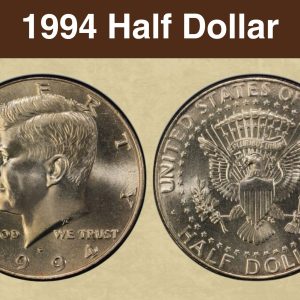
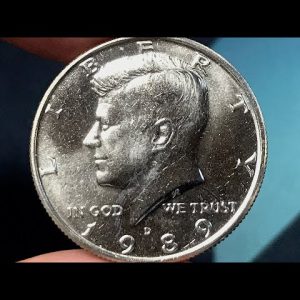
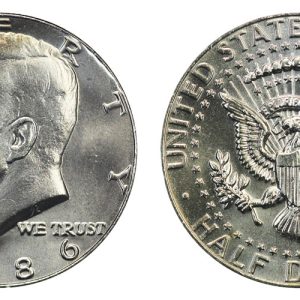
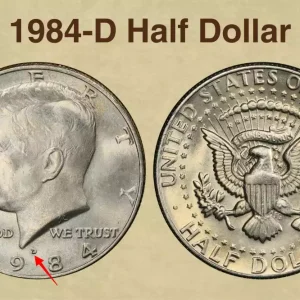
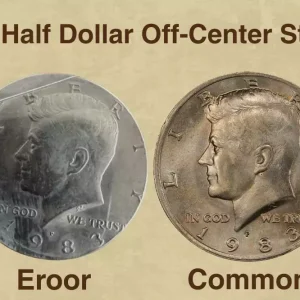
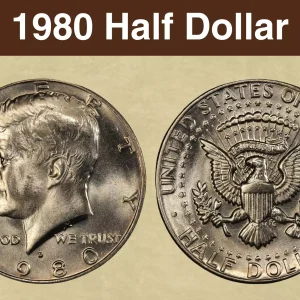
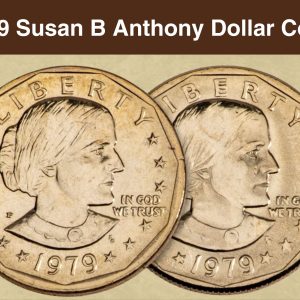
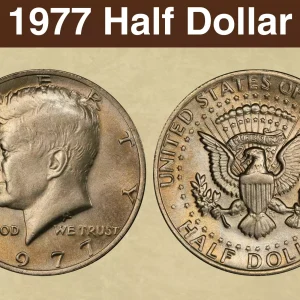
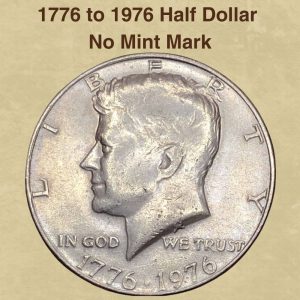
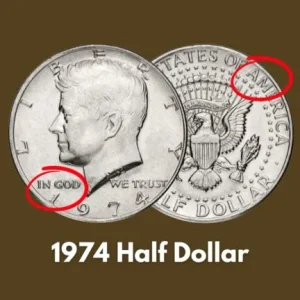
How much is a 1920 silver half dollar worth?
A 1920 silver half dollar is worth anywhere from about $18 for a coin in “Good” condition to over $100,000 for a high-grade 1920-S “S” mint mark. The exact value depends on the specific coin, including the mint mark ( D cap D 𝐷, S cap S 𝑆, or no mint mark from Philadelphia), the coin’s condition (grade), and its overall eye appeal.
What errors to look for in half dollars?
1964 Proof Heavily Accented Hair. 1964 Proof and Circulation Strike Doubled Die. 1968-S Proof Inverted Mint Mark. 1971-D and 1977-D Struck on 40 Percent Silver Clad. 1974-D Doubled Die Obverse. 1979-S Proof Filled S & Clear S. 1981-S Proof Clear S & Flat S.
What is the rarest year of The Walking Liberty Half Dollar?
The rarest Walking Liberty half dollar is the 1921-D, which had the lowest mintage of the entire series with just 208,000 coins struck. The 1921 and 1921-S are also among the rarest dates due to their low mintages of 246,000 and 548,000, respectively. Other rare examples include certain early dates, particularly those with the mintmark on the obverse in 1917, and specific varieties like the 1938-D which had a low mintage.
Where is the mint mark on a 1920 half dollar?
During the first two years, the mint mark was placed on the obverse (Walking Liberty) side of the coin. Beginning in 1917, the mark was moved to the reverse (Eagle) side. The design remained the same until 1947, when it was replaced with the Franklin half dollar.